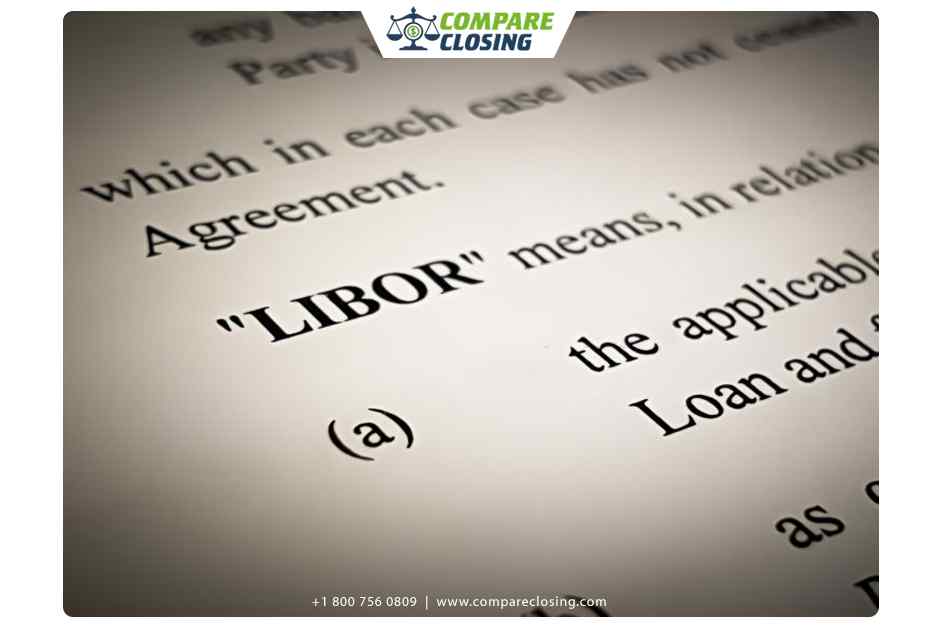Table of Contents
- What Are Netting Escrows & How Does It Work?: The Best Guide - January 2, 2024
- The Secret About Prescriptive Easement: Top Guide 1 Must Know - December 4, 2023
- About Home Equity Loans In Texas And How Can One Obtain It - November 27, 2023
What does LIBOR stand for?
LIBOR stands for London Interbank Offered Rate.
Everyday the rate is calculated and published by the Intercontinental Exchange (ICE), but these days it is being phased out because of recent scandals and questions about its validity as a benchmark rate.
LIBOR will be phased out by June 30, 2023, says the Federal Reserve and regulators in the UK, and will be replaced by the Secured Overnight Financing Rate (SOFR).
So after December 31, 2021, LIBOR one-week and two-month USD rates will not be published any longer.
What is LIBOR?
When major global banks lend to one another in the international interbank market for short-term loans with a benchmark interest rate that rate is called LIBOR.
Understanding LIBOR
The U.S. dollar, the euro, the British pound, the Japanese yen, and the Swiss franc are the five currencies on which LIBOR is based.
The seven different maturities of LIBOR are overnight/spot next, one week, and one, two, three, six, and 12 months.
There are a total of 35 different LIBOR rates calculated and reported each business day which comes from the combination of five currencies and seven maturities.
The three-month U.S. dollar rate is the most commonly quoted rate and is usually referred to as the current LIBOR rate.
Every day, major global banks are asked by ICE, as to how much they would charge for short-term loans to other banks.
The highest and lowest figures are taken, then the average is calculated from the remaining numbers. This is called a trimmed average.
Then each morning this rate is posted as the daily rate.
It is never a static figure. After calculating the finalized rates for each maturity and currency, the ICE Benchmark Administration (IBA) announces and publishes once a day at 11:55 a.m. London time.
Since LIBOR is also the basis for consumer loans in countries around the world, it affects consumers in the same manner as it does financial institutions.
The interest rates on credit cards, car loans, and adjustable-rate mortgages fluctuate based on the interbank rate.
How Is LIBOR Calculated?
A designated panel of global banks for each currency and tenor pair has been constituted by the IBA.
The panel for U.S. dollar LIBOR constitutes 16 major banks, like Bank of America, Barclays, Citibank, Deutsche Bank, JPMorgan Chase, and UBS.
And these banks are considered eligible for membership on the ICE LIBOR panel because they have a major role in the London market, the selection process is held annually.
The IBA submitted a new proposal, in April 2018 suggesting using a standardized, transaction-based, data-driven, layered method called the Waterfall Methodology for determining LIBOR to strengthen the LIBOR calculation methodology.
Uses of LIBOR
Across the world, LIBOR is used in a wide variety of financial products. Like for:
- Standard interbank products
- Commercial products
- Hybrid products
- Consumer loan-related products
For interest rates finalized by central banks, LIBOR is used as a standard gauge of market expectation.
It is the indicator of the health of the overall banking system and accounts for the liquidity premiums for various instruments traded in the money markets.
For standard processes like clearing, price discovery, and product valuation LIBOR is used as a reference rate.
LIBOR Equivalents
Apart from LIBOR, there are other identical regional interest rates that are popularly followed across the globe.
The European Interbank Offered Rate (EURIBOR) is for Europe, the Tokyo Interbank Offered Rate (TIBOR) for Japan, the Shanghai Interbank Offered Rate (SHIBOR) for China, and the Mumbai Interbank Offered Rate (MIBOR) for India.
Phasing Out LIBOR
Even if LIBOR has been used since the 1980s, only in recent years have the regulatory reforms have benchmark rates and replace LIBOR as the interbank borrowing rate.
After 2021 U.K. regulators will no longer want banks to publish LIBOR rates.
In 2023 LIBOR will be replaced by the Secured overnight financing rate (SOFR). Which too is a benchmark interest rate used for dollar-denominated loans and derivative contracts.
SOFR is based on actually observed transactions in the U.S. Treasury market while LIBOR used estimations of borrowing rates that are the difference between SOFR and LIBOR.
When LIBOR is phased out, other countries are exploring using their own version of a benchmark rate while the U.S. and the U.K. are likely to use SOFR.
Conclusion
Major global banks lend to one another with a stipulated standard interest rate called LIBOR.
The Waterfall Methodology is used to calculate the rate which is a standardized, transaction-based, data-driven, layered method.
Today because of manipulation, scandal, and methodological critique, LIBOR is less credible as a benchmark rate.
So with the phase-out of its use beginning after 2021, on June 30, 2023, it will be replaced by the Secured Overnight Financing Rate (SOFR).
Amanda Byford
Amanda Byford has bought and sold many houses in the past fifteen years and is actively managing an income property portfolio consisting of multi-family properties. During the buying and selling of these properties, she has gone through several different mortgage loan transactions. This experience and knowledge have helped her develop an avenue to guide consumers to their best available option by comparing lenders through the Compare Closing business.





